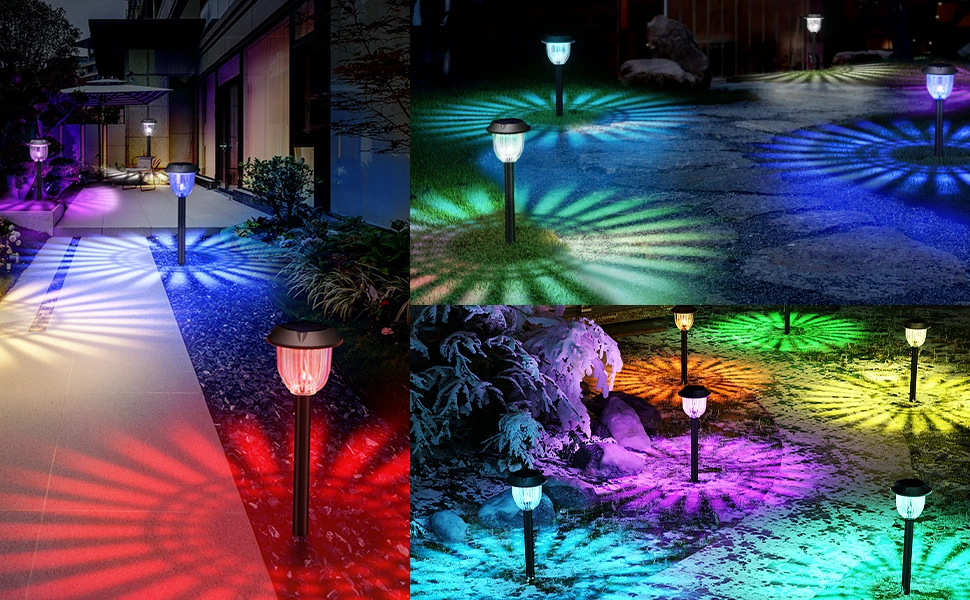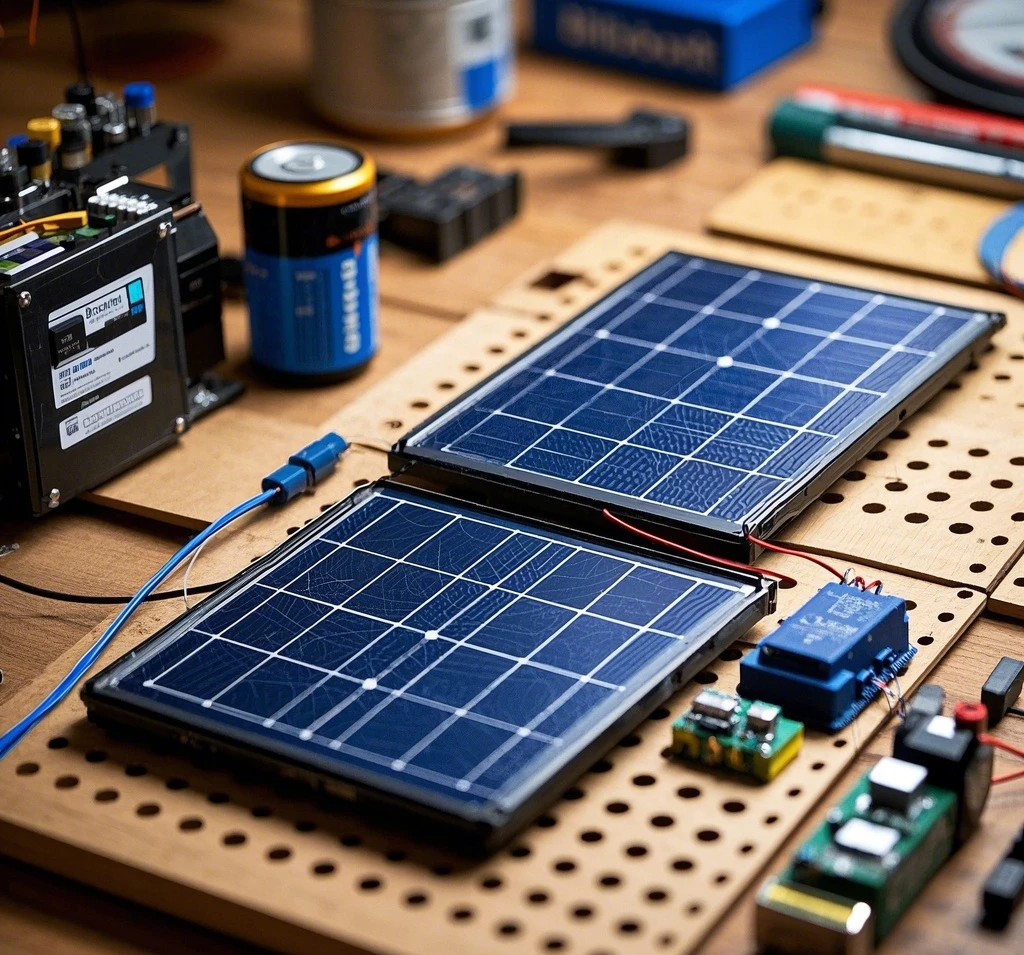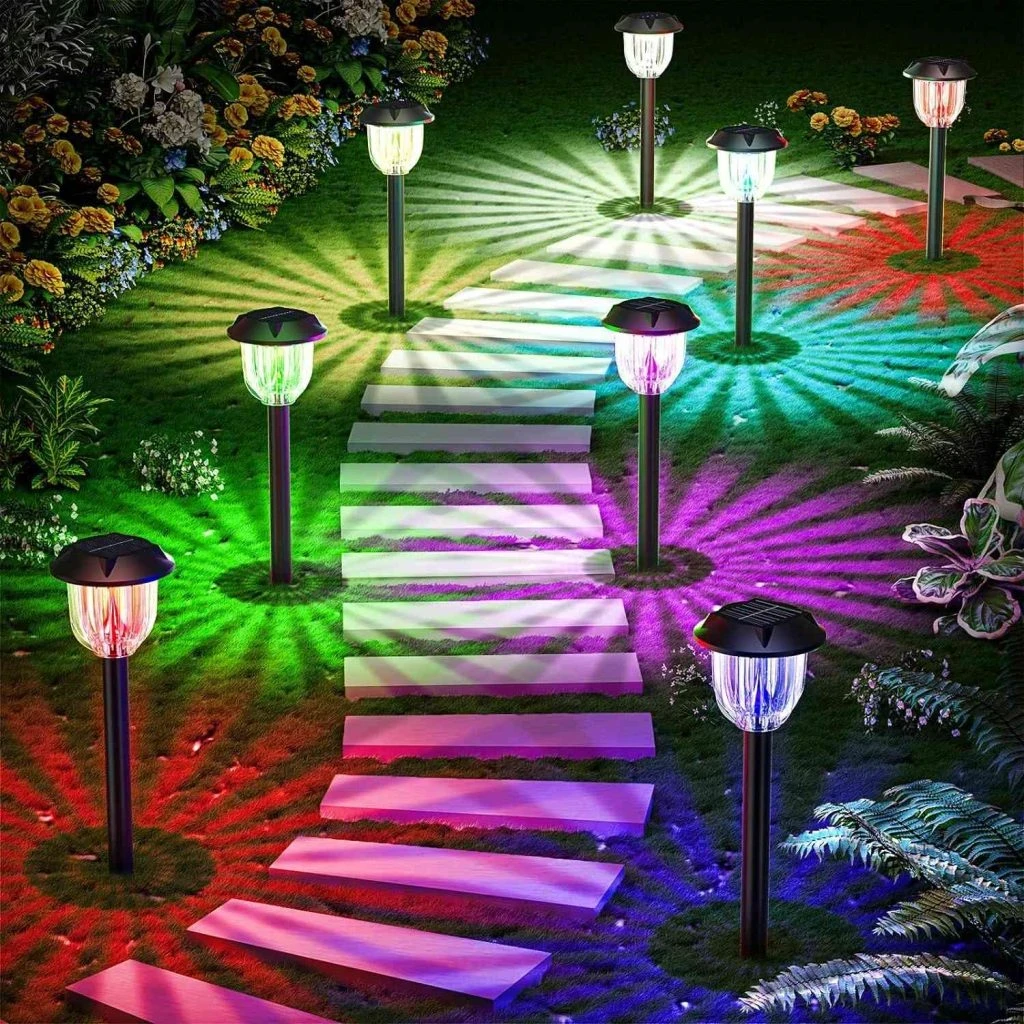Color changing solar lights have surged in popularity, transforming outdoor spaces with vibrant, dynamic illumination. These eco-friendly lights harness solar energy to power LED color changing lights, cycling through hues like red, blue, and green to create stunning visual effects for gardens, pathways, and patios. Their appeal lies in ease of use, energy efficiency, and no wiring requirements, making them ideal for DIY enthusiasts. However, improper installation or maintenance can lead to issues like dim lighting or failure to change colors. This guide provides a step-by-step solar light installation process, practical troubleshooting solar lights tips, and expert advice to ensure your outdoor solar lighting shines brightly. Drawing from Reddit user feedback and industry insights, we address common challenges to help Google and Reddit users maximize their color changing garden lights.

Why Color Changing Solar Lights?
Solar-powered color lights offer a blend of functionality and aesthetics. Unlike traditional lighting, they require no electricity, reducing costs and environmental impact. Their color changing LED technology creates ambiance for events or everyday enjoyment, with many models featuring automatic dusk-to-dawn sensors. However, their performance depends on proper solar light placement, maintenance, and quality components like solar panels and rechargeable batteries. This guide ensures you avoid pitfalls and enjoy reliable color changing pathway lights.
Installation Guide for Color Changing Solar Lights
Proper installation is critical for optimal performance. Follow these steps to set up your color changing solar lights effectively.
Choosing the Best Location for Solar Light Placement
Selecting the right spot maximizes sunlight exposure, ensuring your solar-powered color lights charge fully. Consider these factors:
- Sunlight Exposure: Place lights in areas receiving at least 6-8 hours of direct sunlight daily. South-facing locations (in the Northern Hemisphere) are ideal.
- Avoid Shade: Steer clear of trees, buildings, or overhangs that cast shadows, as even partial shade can reduce charging efficiency by up to 50%.
- Surface Type: Ensure the ground is stable for staking or mounting. For rocky areas, use surface-mounted models or adhesive bases.
Reddit user feedback emphasizes the importance of solar light placement. One user noted that moving their color changing garden lights from a tree-shaded area to an open lawn doubled their runtime, highlighting the need for unobstructed sunlight.
Installation Steps for Solar Lights
Installing color changing solar lights is straightforward, but precision ensures longevity and performance. Follow these steps:
- Charge Before Use: Place lights in direct sunlight for 24-48 hours before first use to fully charge the rechargeable batteries.
- Assemble Components: Attach stakes, poles, or mounts as per the manufacturer’s instructions. Ensure solar panels are clean and undamaged.
- Secure the Light: For staked models, push firmly into the ground, ensuring stability. For wall-mounted lights, use weather-resistant screws or adhesive.
- Adjust Panel Angle: Tilt the solar panel to face the sun’s path (typically 30-45 degrees in most regions) to maximize energy capture.
- Test Functionality: Turn on the light manually (if applicable) or wait until dusk to confirm it activates and changes colors.
Brands like Gigalumi, Solpex, and Hampton Bay offer user-friendly designs with clear instructions, making solar light installation accessible even for beginners.
Common Installation Mistakes to Avoid
Avoid these errors to ensure your color changing pathway lights perform optimally:
- Placing in Shady Areas: Lights under trees or near tall structures often fail to charge, leading to dim or non-functional lights.
- Ignoring Panel Angle: Flat panels collect less energy in winter or high-latitude regions. Adjust angles seasonally for better charging.
- Loose Installation: Unstable stakes can tilt or fall, misaligning solar panels. Secure firmly or use weighted bases in windy areas.
A Reddit user shared that their color changing solar lights stopped working after being placed near a porch overhang, underscoring the need for careful solar light placement.
Troubleshooting Color Changing Solar Lights
Even the best color changing solar lights can encounter issues. Below are common problems and solutions based on Reddit user feedback and expert insights.

Problem 1: Lights Don’t Turn On
If your outdoor solar lighting fails to illuminate, try these steps:
- Check Battery Charge: Remove the battery cover and ensure batteries are properly seated. Charge in sunlight for 24 hours or replace with new rechargeable batteries (e.g., NiMH AA, 1000-2000mAh).
- Inspect Solar Panel: Dirt, dust, or snow can block sunlight. Clean the solar panel with a soft cloth and mild detergent, avoiding abrasive materials.
- Test Switch: Some models have an on/off switch. Ensure it’s in the “on” position, as it may have been accidentally toggled during installation.
A Reddit thread on r/Solar revealed that 30% of “dead” solar-powered color lights were revived by cleaning panels or replacing corroded batteries, highlighting maintenance as a key factor.
Problem 2: Lights Don’t Change Colors
If your color changing LED technology isn’t cycling through hues, consider these fixes:
- Clean Sensors: Many lights use sensors to detect light levels or trigger color changes. Wipe sensors with a damp cloth to remove dirt or debris.
- Replace Batteries: Weak batteries may power the light but lack the capacity for color cycling. Upgrade to rechargeable batteries with higher mAh ratings (e.g., 2000mAh NiMH).
- Reset the Light: Some models have a reset button or require turning off/on to recalibrate. Check the manual for specific instructions.
A user on r/HomeImprovement noted that their Gigalumi color changing lights resumed color cycling after replacing 800mAh batteries with 1200mAh ones, suggesting battery capacity is critical for color changing garden lights.
Problem 3: Lights Are Too Dim
Dim color changing pathway lights can detract from their aesthetic appeal. Address brightness issues with these steps:
- Relocate for Better Sunlight: Move lights to a sunnier spot if they’re in partial shade. Even 2-3 hours more sunlight can boost brightness significantly.
- Check Charging Time: Ensure lights receive 6-8 hours of sunlight. In winter, tilt panels to capture low-angle sunlight or store lights indoors during prolonged cloudy periods.
- Upgrade LEDs or Batteries: If lights remain dim after relocation, consider models with higher lumen output (10-20 lumens) or replace batteries to improve power delivery.
Reddit users recommend Solpex lights for consistent brightness, noting that their solar panels (often polycrystalline) charge efficiently even on overcast days.
Additional Tips for Long-Term Performance
To keep your color changing solar lights shining brightly, follow these maintenance practices:
- Regular Cleaning: Clean solar panels every 1-2 months to remove dust, pollen, or bird droppings, which can reduce efficiency by up to 20%.
- Battery Maintenance: Replace rechargeable batteries every 1-2 years, as they degrade with daily charge cycles. Store lights indoors during extreme weather to extend battery life.
- Weather Protection: Use waterproof models with IP65 ratings or higher to withstand rain and snow. Apply silicone sealant to seams for extra protection in humid climates.
- Seasonal Adjustments: In winter, angle solar panels steeper to avoid snow buildup and maximize low-angle sunlight.
Reddit user feedback underscores the value of maintenance. One user extended the lifespan of their Hampton Bay lights to 3 years by cleaning panels monthly and storing them during heavy freezes.
Why Proper Installation and Maintenance Matter
Correct solar light installation and regular maintenance are the cornerstones of reliable color changing solar lights. By choosing optimal solar light placement, securing components properly, and addressing issues like dimness or color failure promptly, you can enjoy vibrant outdoor solar lighting for years. Troubleshooting solar lights proactively—whether by cleaning solar panels, upgrading rechargeable batteries, or relocating lights—prevents frustration and maximizes value.
Practical Takeaways
- Test Before Installing: Always charge lights fully before permanent placement to confirm functionality.
- Document Placement: Note where each light is installed to track sunlight exposure and adjust as needed.
- Keep Spares: Stock extra rechargeable batteries and cleaning supplies for quick fixes.
- Check Reviews: Brands like Gigalumi, Solpex, and Hampton Bay are praised on Reddit for durability and ease of use, making them reliable choices.
Conclusion
Color changing solar lights bring beauty and functionality to outdoor spaces, but their performance hinges on proper solar light installation and maintenance. By selecting sunny locations, following precise installation steps, and avoiding common mistakes like shady placement, you can ensure your color changing garden lights shine brightly. When issues arise, troubleshooting solar lights with simple fixes—cleaning solar panels, replacing rechargeable batteries, or adjusting positions—restores their vibrancy. With brands like Gigalumi, Solpex, and Hampton Bay offering user-friendly color changing pathway lights, and insights from Reddit user feedback guiding best practices, you’re equipped to create a stunning, hassle-free lighting display. Keep these tips in mind, and your outdoor solar lighting will dazzle night after night.


Leave a Reply